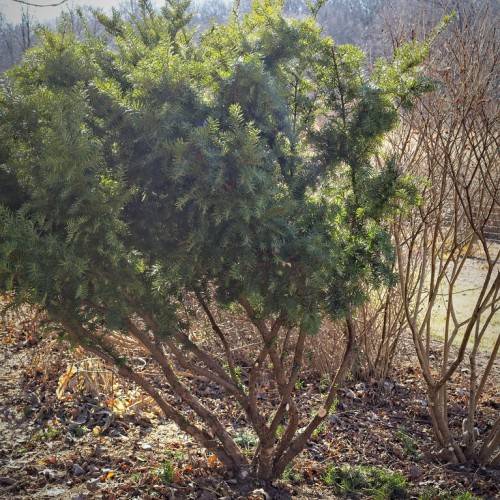
yew
Taxus media 'Densiformis'
Cycle:
Perennial
Watering:
Average
Hardiness Zone:
4 - 7
Flowers:
Flowers
Sun:
Full sun,part shade
Cones:
Yes
Leaf:
Yes
Growth Rate:
Low
Maintenance:
Low
Poisonous To Humans:
Yes
Poisonous To Pets:
Yes
Drought Tolerant:
Yes
Salt Tolerant:
Yes
Thorny:
Yes
watering
The yew (Taxus media 'Densiformis') prefers medium to moist soil. It should be watered thoroughly once per week, allowing the soil to dry out between waterings. If the soil becomes dry faster than that, it should be watered more often. In periods of low rainfall, be sure to water the yew regularly so the soil remains moist. Generally though, these plants are quite tolerant of drought once established. Be careful not to over-water, as too much water can lead to root-rot.
sunlight
The yew (Taxus media 'Densiformis') is a partially shade-tolerant species that does best with at least 4-6 hours of sunlight per day. However, it can tolerate some periods either side of this exposure as long as it is not for prolonged periods of time, for example 8 hours or more. Ideally, the yew should receive sunlight in the early morning and late afternoon/evening. During periods of extreme heat, the yew should be protected from direct sunlight to avoid sunburn damage.
pruning
Yew (Taxus media 'Densiformis') should be pruned in early spring or late winter when the plants are still in their dormant state. This allows the plant to heal quickly and helps to prevent the formation of sap pockets. Pruning of yew should be moderate and judicious. Remove any dead or diseased stems immediately as well as any that are growing inward or crossing over other branches. If more significant pruning is necessary, remove no more than 1-third of the branches at a time to avoid stressing the plant. After pruning, use pruning seal or glue to seal any cuts to prevent decay and disease.
